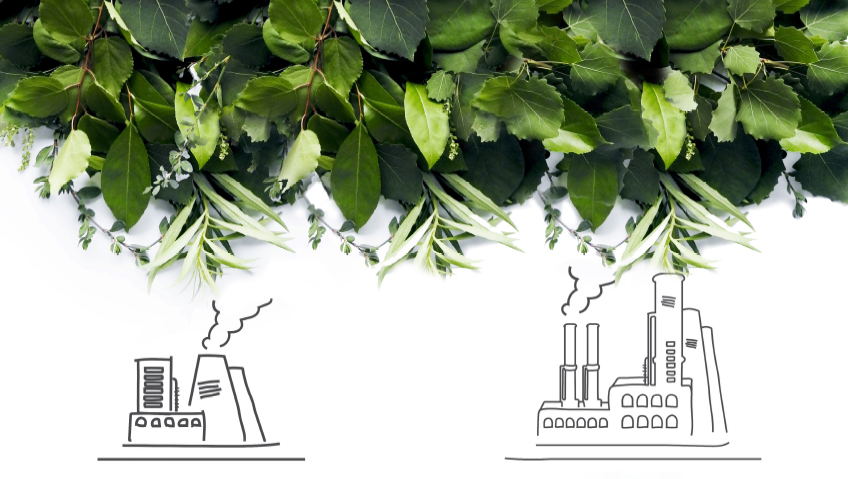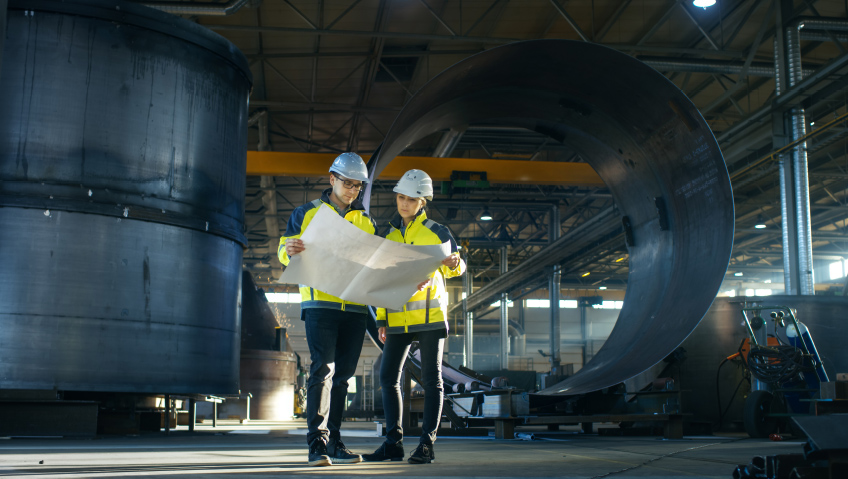The U.S. Energy Information Administration says manufacturing consumes 20 percent of the country’s annual energy output, about the energy in 3.6 billion barrels of crude oil. That’s the kind of big statistic that warms the heart of American manufacturers, but how do we sustain it?
Much of that energy is still obtained from the very fossil fuels accused of severely affecting the environment and climate. Opinions may differ on this, but it’s hard to hear constant news of wildfires, floods, and storms and not wonder if something is going on.
Mostly prompted by concerned citizens – from schoolchildren to leading scientists – governments around the world have also taken notice of the wildfires and other natural disasters in their countries. And over time they have tried to encourage companies and businesses, including those in the manufacturing industry, to make their processes more environmentally friendly or “green.” With varying success, it may be noted.
In a Forbes article, Helen Clarkson, CEO of the Climate Group, a non-profit organization that works to accelerate climate actions, talks about government trends to encourage and incentivize companies to develop greener practices.
“Governments’ economic stimulus plans will likely provide the biggest injection of cash we will see in the next 10 years, so we must make sure it is directed into the right areas,” says Clarkson. “Practically, the investment needs to create jobs and security, but it must also give people hope for a safer, brighter tomorrow.”
Setting a standard
With increasing funds potentially becoming available to support companies that want to transform their processes, some companies are taking it upon themselves to enforce new sustainability standards. That’s nothing but a positive trend.
Known as voluntary sustainability standards, these prompt companies to develop and modify their products to meet specific economic, social, and environmentally sustainable targets. These standards may define all the steps that go into creating a product, from raw materials to manufacturing to quality. The process may well cover the transportation of the product, depending on which standards are followed.
And while potential “beneficial stimulus” from the government sounds good, there are some other additional, powerful, and immediate advantages to voluntarily applying sustainability standards to production processes and products.
A driving force behind sustainability standards is the market itself. Consumers are becoming much more conscious about the products they buy. In particular, they look more closely at how products are made and at any negative impact on the environment, or economic impact on people.
The Economist has reported on these changing patterns evidenced in how people shop: “New shoppers are not just value-conscious, but also increasingly project their ethical and political values onto their decisions about what they buy. So for example they select firms on the basis of their environmental credentials and supply-chain standards.”
By making changes to their processes, companies not only can help the environment, but they can also generate a little positive PR while they’re at it.
Data comes into its own
Not only does applying voluntary standards to the manufacturing process make sense from a market viewpoint, but a company can also catch small problems and get ahead of them before they become bigger problems. That’s because an important source behind implementing sustainability standards is data.
Making changes means collecting and processing data which often uncovers waste and inefficiencies that may add up to significant costs over time. So as companies move toward sustainability and reduce their resource footprint, they may get part of the way there by improving performance and reducing inefficiencies.
How does it look in the broader landscape? Manufacturers are not silos, but connected and reliant on suppliers and power providers.
Companies, and entire industries, will have to change their operations as sustainability becomes even more of a driver for doing business. Auto companies, for instance, are investing heavily in developing and manufacturing electric vehicles, incentivized by governmental policy.
But for this to yield the desired environmental wins, we also need utilities and energy companies to make the shift from fossil fuels to renewable energy. And to connect all the dots, these programs will need to be measured and coordinated.
Sustainability for smaller companies
A side note here for start-ups and mid-sized companies: while the effort of incorporating sustainability standards may be more daunting for companies with a smaller budget, the results may provide a way to stand out from the competition. And though the expenditures may be more challenging to absorb than for some of the bigger players, starting early on the path to sustainability can establish a company’s reputation with consumers at an early point in the process.
Inc. Magazine notes the following about some advantages that smaller companies may have with this transition. “Since smaller companies are generally accountable to fewer third parties, the tasks of adapting which issues are managed and modifying subsequent disclosures in line with stakeholders’ specific expectations are comparatively more manageable.”
Something which may not immediately spring to mind when you’re thinking about the environment is automation.
While providing some clear advantages to manufacturing, automation also has beneficial consequences for the environment. Since first being introduced to factory floors (and given a push by U.S. car manufacturers in the 1980s racing to automate production and scale up), automation has gone through several evolutions.
Now smart machines come together in every aspect of the manufacturing process to deliver more efficiencies and production power than was possible before. And as mentioned, data is collected from the machines to make adjustments quickly and efficiently and course-correct all the parts of the manufacturing process.
The machines communicate exactly what needs attention and how to optimize output – all at a speed that would be impossible for humans to emulate.
Add to this AI and cloud monitoring, and there are multiple ways to not only achieve higher sustainability standards but also improve the bottom line. In particular, it’s power and water that are the main components of most manufacturing processes. Through constant data monitoring, the savings that come from these will not only make for a smaller environmental footprint but also improve fiscal performance.
Automation’s bad rap
Something else to consider here as the biggest strike against automation is that it is often thought to reduce jobs. But some of these fears may have been exaggerated.
The Economist reported on a 2021 paper prepared for the international Organisation for Economic Co-operation and Development (OECD) that tested how predictions related to automation played out.
“Countries facing what they call higher ‘automation risk’ in 2021 saw stronger employment growth, consistent with the idea that technology adoption leads to higher productivity. It is striking that Japan, Singapore, and South Korea all have world-beating rates of robot adoption, and yet also lower unemployment. It may be that the labor market will continue to adapt to the rise of automation, but not mass displacement of workers.”
We talked about potential government stimulus and, while the carrot is preferable, governments may also use the stick.
As Forbes reports, “More and more governments are stepping up with goals to help combat climate change. It is inevitable that formal standards and measurement requirements will follow these goals, and companies’ networks of suppliers, manufacturers, partners and logistics will need to change operations in order to comply – regardless of where they operate.”
So while not the best way to motivate, there is something to be said of staying ahead of the curve to prevent any disruptions to the manufacturing process that may come from new government regulations.
There are several reasons to consider taking on voluntary sustainability standards. The good news here is that companies may also experience robust benefits by doing so. And while there’s no way to sugar-coat some of the challenges that are tied into making changes to the manufacturing process, the long-term returns may be well worth the investment.






